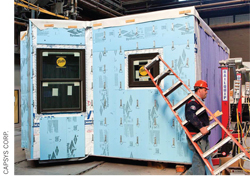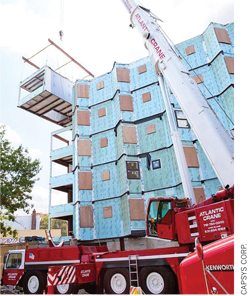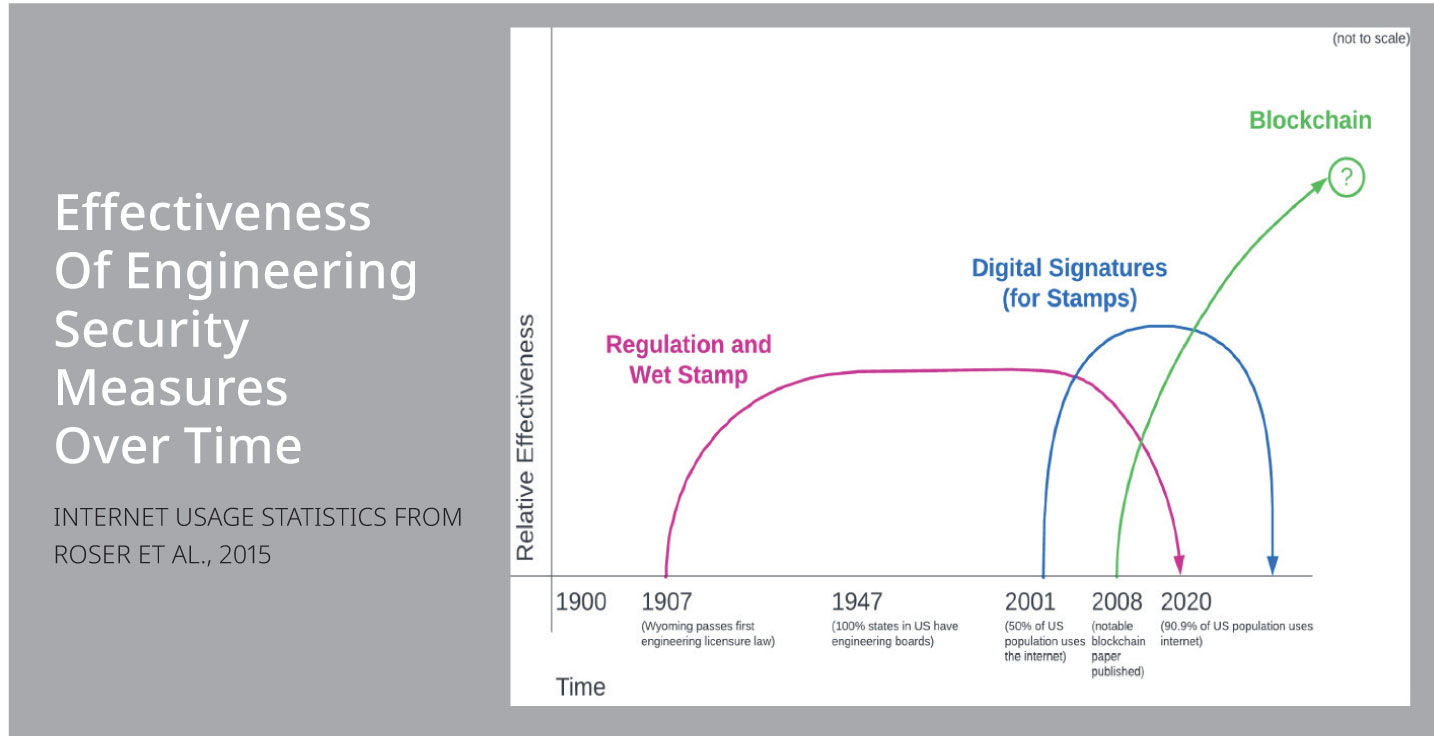March 2014
COMMUNITIES: CONSTRUCTION
Off-Site Construction Council to Provide Research, Education, and Outreach
 A new council formed to provide information and consistency in the development and use of off-site construction methods held its first official meeting in January.
A new council formed to provide information and consistency in the development and use of off-site construction methods held its first official meeting in January.
Despite advancements in off-site construction that have allowed for the delivery of more complex and sophisticated projects, architects, engineers, and contractors have for years lacked an unbiased source of information on off-site construction methods. The National Institute of Building Sciences’ Off-Site Construction Council (OSCC) was established in 2013 to fulfill that purpose.
“There are a number of trade associations representing the off-site sector,” says Ryan Smith, chair of the OSCC board of directors. Smith is an associate professor at the University of Utah’s School of Architecture and director of the school’s Integrated Technology in Architecture Center. “That’s one reason we thought it would be important to have this council—to coalesce all of those.”
In addition, building owners, contractors, members of academia, and manufacturers have joined the council. “We felt it was important at the institute to have that type of forum for focus on off-site construction,” says Ryan Colker, the institute’s staff director for OSCC. “We wanted to have a broad scope of looking at off-site construction.”
According to the institute, OSCC will:
-
Provide a neutral forum for off-site construction interest groups to share information and solidify the expert base of the off-site industry sector;
-
Foster partnerships and integration of owners, industry designers (architects and engineers), and builders (fabricators and contractors) to increase the productivity of the construction sector and promote knowledge sharing across the building industry disciplines;
-
Establish a mechanism for industry and academia to work through knowledge transfer partnerships to advance off-site methods and practices by identifying gaps in research; conducting R&D on commercialization of off-site systems; and promoting, collecting, and disseminating findings and best practices in off-site construction; and
-
Use the partnerships to achieve standards for off-site construction sectors in connection with other institute councils, promoting an integrated approach to building science/technology delivery for the construction sector.
 Off-site construction is the planning, design, fabrication, and assembly of building elements at a location other than their final installed location. The building elements may be prefabricated at a location other than the construction site and then transported to the site, or they may be prefabricated on the construction site and then transported to their final location.
Off-site construction is the planning, design, fabrication, and assembly of building elements at a location other than their final installed location. The building elements may be prefabricated at a location other than the construction site and then transported to the site, or they may be prefabricated on the construction site and then transported to their final location.
It is believed off-site construction methods provide productivity benefits in areas such as labor, scheduling, cost, quality, and safety. Following its first meeting, the council plans to focus its research efforts on establishing whether those commonly held beliefs can be backed up.
“It makes sense that if you have a higher degree of control you should be able to manage the materials and the labor better, but there’s no real concrete evidence or research-based evidence out there to prove it,” says OSCC Board Member Tom Hardiman, executive director of the Modular Building Institute. “Frankly, if the trade association puts something out there saying modular is awesome, what do you expect us to say? So really we needed this council.”
“There’s a lot of interest in demonstrating additional value that can be provided by the use of off-site construction methods,” Colker says. “So whether it’s cost, or safety, or sustainability, or time, there was really an interest in getting more focused information and data on those particular areas. We kind of have a sense anecdotally that the use of off-site construction can be beneficial in those areas, but we don’t necessarily have the data to be able to compare to traditional on-site construction practices.”
The first meeting of OSCC was held in Washington, DC, at Building Innovation 2014, the National Institute of Building Sciences second annual conference and expo.
“We think that as we move through these conferences that we can change the dialogue across the country relative to how we have a better built environment,” says Henry Green, president of the National Institute of Building Sciences. “Our effort at the conferences is specifically intended to disseminate information.”
In its first year, Building Innovation had 562 attendees and eight symposia. This year the conference and expo expanded, attracting more than 700 attendees. Additionally, the institute hosted 10 symposia.


 Volunteering at NSPE is a great opportunity to grow your professional network and connect with other leaders in the field.
Volunteering at NSPE is a great opportunity to grow your professional network and connect with other leaders in the field. The National Society of Professional Engineers (NSPE) encourages you to explore the resources to cast your vote on election day:
The National Society of Professional Engineers (NSPE) encourages you to explore the resources to cast your vote on election day:


